B2B brand positioning is entering a period of major transformation. Over the next five years, we’ll see a series of shifts that will reshape how brands communicate their value – and how they’re perceived.
A solid product and memorable tagline are no longer enough. Buyers today are more informed, more sceptical, and more attuned to social and cultural issues than ever before. In a market where differentiation is difficult and competition is fierce, the brands that lead will be those that adapt with agility and purpose.
The following trends offer a window into the future of B2B brand strategy. Each reflects broader behavioural, cultural and economic forces, and highlights where brand positioning is heading – alongside practical insights for marketers looking to stay relevant and resilient.
1) From profit to purpose: values-driven positioning goes mainstream
In the past, brand purpose was often relegated to a line on a website or a CSR initiative buried at the bottom of a brochure. That’s no longer the case. B2B buyers increasingly expect the organisations they work with to stand for something—and they’re making decisions accordingly. In the years ahead, purpose and values won’t just complement brand positioning; they’ll define it.
This shift is fuelled by heightened awareness of social and environmental issues, as well as changing expectations from clients, employees and investors. Stakeholders want to see real-world impact, not just promises. Whether it’s a serious commitment to sustainability, ethical supply chains, or meaningful diversity and inclusion efforts, businesses that actively demonstrate their values are already outperforming less transparent competitors. Sustainability, in particular, has moved from a differentiator to a baseline expectation.
For marketers, the message is clear: build your brand story around your values, and ensure those values are not just performative but embedded in how your business operates. Positioning your company as one that contributes positively to society is no longer just a PR opportunity—it’s a strategic imperative. Done well, values-led branding doesn’t just appeal to conscious buyers. It builds long-term trust and loyalty with an audience that wants more than efficiency and pricing—they want to work with businesses that reflect their worldview.
2) From corporate to human: the rise of emotional B2B branding
One of the most striking shifts in B2B brand positioning is the move away from formality and corporate rigidity towards something far more human. The next wave of B2B branding is emotional, personality-driven, and grounded in genuine connection. This change stems from a simple truth: B2B buyers are still people. Whether they’re a procurement lead, CTO, or finance manager, they remember how a brand made them feel, not just what it offered.
In the coming years, expect more B2B brands to drop the dense jargon and instead embrace storytelling, humour, and human-centric narratives. The traditional, dry pitch is fading fast as brands realise that relatability often trumps technical precision when it comes to memorability. This trend is only accelerating as younger generations – particularly millennials and Gen Z – rise into decision-making roles. These buyers have grown up with brands that talk to them directly, openly and with authenticity. They expect the same from B2B suppliers.
For marketers, this shift calls for more than a tone-of-voice update. It means making brand leaders visible and personable, celebrating real customer stories, and allowing campaigns to show emotion and warmth. A more human approach doesn’t mean less credibility – it means greater engagement, increased brand recall, and a deeper sense of trust in an otherwise faceless market.
3) From one-size-fits-all to personalised experiences
As the B2B landscape becomes increasingly saturated, brands that demonstrate a deep understanding of their customers will rise above the noise. The era of generic messaging is over. Buyers want to feel seen. That’s driving a surge in personalised, customer-centric positioning that’s only set to grow stronger in the next few years.
Today’s buyers have more control over the journey than ever before. They conduct their own research, evaluate options through digital touchpoints, and expect the same level of tailored experience they get in consumer markets. Fortunately, advances in data and AI make it easier than ever to deliver on these expectations – from dynamic content that adapts to a user’s profile to role-specific value propositions crafted for each stakeholder in the buying committee.
But it’s not just about what’s possible – it’s about how it’s done. Personalisation should feel helpful, not invasive. Trust remains critical, especially in light of privacy concerns and shifting regulations. For brand teams, this means walking a careful line: segment and tailor with care, but anchor all your messaging in a consistent, unified identity. Positioning should be flexible enough to speak directly to different industries, roles or account types, without losing the thread of who you are.
Ultimately, the most successful brands will be those that show buyers: “We get you.” That sense of relevance is the new competitive advantage.
4) From selling to educating: brands as thought leaders
B2B brands are no longer just vendors – they are increasingly expected to be guides. Over the next five years, positioning your business as a trusted source of knowledge will be just as important as positioning your products or services. The shift from seller to educator reflects how buyers now approach the purchasing process: they want to be informed, empowered and confident before engaging with sales.
Recent data shows that the majority of B2B buyers have already selected a preferred supplier before making first contact. That means your content, reputation and perceived expertise are doing the selling long before your sales team steps in. Brands that invest in thought leadership – through webinars, reports, opinion pieces, or how-to guides – establish themselves as credible partners, not just commercial operators.
In a world awash with AI-generated content, authenticity and original thinking stand out. Brands that can speak with authority and bring new insights to the table will earn trust faster and hold attention longer. Marketers should work with internal subject matter experts to consistently share valuable, relevant knowledge that supports the buyer’s journey. Over time, this not only shortens sales cycles but also positions your business as the logical, low-risk choice.
And the real opportunity? Becoming the brand buyers rely on even before they’re in the market.
5) From generalist to specialist: owning your niche
In a world where B2B offerings increasingly blend into one another, the brands that rise to the top will be those bold enough to focus. Over the next few years, we’ll see more companies positioning themselves not as generalists trying to serve everyone, but as specialists – experts in a defined space with a reputation to match.
This trend is driven by buyer fatigue and information overload. When every brand claims to offer end-to-end solutions, value, and innovation, the messaging becomes white noise. Buyers are often left struggling to tell one vendor from another, leading to hesitation, extended decision cycles, or stalled deals altogether.
To stand out, many B2B brands are narrowing their focus. Whether it’s targeting a specific industry vertical, championing a distinct business model, or solving a niche problem, owning a specialised space allows brands to build trust faster and demonstrate authority more credibly. A focused proposition helps buyers feel like the brand truly understands their world – and that level of relevance is hard to compete with.
For marketers, this requires a strategic shift: identifying the intersection between your company’s unique strengths and a clear market gap. It might mean refining your messaging, elevating niche case studies, or repositioning your entire brand around a more defined audience. The result? You become the obvious choice for a specific type of customer – not just another option among many.
Far from limiting your opportunities, niche positioning unlocks them. In B2B, being the best solution for a smaller, well-understood segment often beats being a forgettable player in a broad market.
Positioning for tomorrow’s B2B landscape
The future of B2B brand positioning isn’t just a matter of new trends – it’s about new expectations. Buyers are demanding more relevance, more humanity, and more substance from the brands they engage with. As we’ve explored, the next five years will reward brands that lead with purpose, speak like people, tailor their approach, share their expertise, and commit to a distinct space in the market.
The challenge for B2B marketers is to weave these elements into a coherent, evolving brand narrative. This means taking a fresh look at how your brand is perceived – internally and externally – and asking the right questions. Are your values visible? Is your voice relatable? Do your messages address the specific needs of your buyers? Are you known for sharing insight, or simply pushing product? And above all, do you stand for something clear, unique and true?
The answers will shape your roadmap. Because the brands that thrive in the years ahead won’t be those that simply follow the trends – they’ll be the ones that help define them. Positioning isn’t a static statement. It’s a dynamic, strategic tool that can help your business lead, connect, and grow – if you’re willing to evolve.


 Whether you want to learn how to use LinkedIn, X or Facebook for marketing, or need to brush up on business skills like leadership, presentation skills or managing meetings, you will find something to enhance your professional skills with these on-demand courses.
Whether you want to learn how to use LinkedIn, X or Facebook for marketing, or need to brush up on business skills like leadership, presentation skills or managing meetings, you will find something to enhance your professional skills with these on-demand courses.